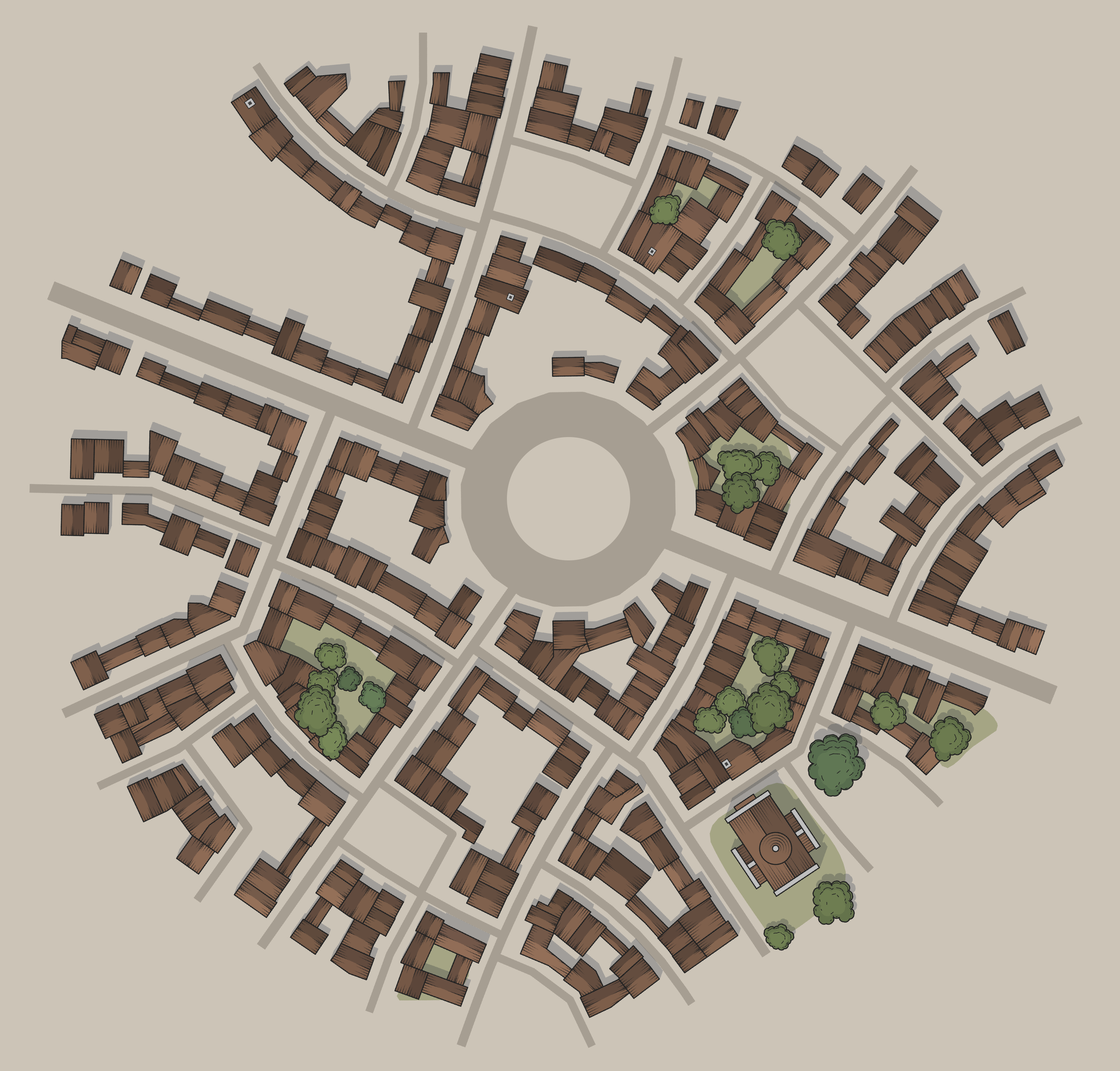Betah
Betah is a vibrant, industrious town nestled along the winding banks of the Ruby River, where the red-hued waters shimmer with mineral richness from the northern foothills. Located north of the capital Port Istrett, Betah serves as a key inland trade and resource hub for the Fuestran Kingdom.
The town's economy thrives on mining, lumber, and millwork, extracting valuable stone and timber from the Ruby Hills and nearby forests. Goods are shipped south to Port Istrett via river barges, making Betah a strategic point in the kingdom’s supply chain.
Demographics
Betah’s culture is industrious and pragmatic, but with a growing appreciation for Elven artistry and philosophy. Many families here are descended from old miners and craftsmen, with a strong work ethic and deep ties to the land. Elven influence has brought a subtle shift: more schools, a town library, and festivals celebrating nature, like the Blossom Moon Festival.
Still, tensions occasionally rise between traditionalist human laborers and Elven migrants or half-elf leaders, especially when labor disputes or trade taxes flare.
Government
Greater Lord Ailwin Faeric rules Betah with a diplomatic yet firm hand. A half-elf of noble bearing and calm intellect, he was appointed by King Bertram Marnor to bridge cultural and political ties between the human-dominated kingdom and the distant, reclusive Elven city of Silvesi. Faeric’s mixed heritage and deep connections in both courts make him uniquely suited to the task.
Though respected, some human families quietly resent Faeric's appointment, seeing it as a concession to Elven influence.
Industry & Trade
Betah's lifeblood flows from its robust industrial sectors and its well-organized trade routes. The mining industry pulls quartz, garnet, marble, and rare volcanic stone from the foothills. These are used not only for construction but also in magical applications and fine jewelry throughout the kingdom.
Lumber is harvested from the dense pine and whitewood forests just east of town. The timber is processed in Riverhewn Mills and crafted into furniture, ship components, and building materials. The Elven influence has led to the creation of delicate woodworks and enchanted items that fetch a high price in aristocratic markets.
The millwork sector—powered by the Ruby River—includes sawmills, stone-cutting mills, and workshops for toolmaking and wagon-building. Many families own or work in these businesses, which also employ a fair number of Dwarves and Half-Elves due to their expertise.
Trade from Betah is steady and diverse. Barges carry raw and refined materials down the coast to Port Istrett, from where they are shipped across Seradestina and even to Silvesi. In return, Betah receives spices, textiles, ironworks, enchanted goods, and luxury items from across the continent. Trade guilds manage these exchanges and help regulate prices, wages, and tariffs.
Recently, under Greater Lord Faeric’s leadership, trade with Silvesi has expanded to include Elven art, rare herbs, and arcane instruments—items previously unseen in Fuestra’s interior towns. This trade partnership is one of the crown’s proudest diplomatic accomplishments in the west.
Guilds and Factions
- Guild of the Emberpick: A miners' collective with deep Dwarven roots.
- Verdant Ring: An Elven-affiliated lumber guild that emphasizes sustainable harvesting.
- Stonewrit Council: A neutral guild of stonemasons and architects that regulate quality and technique.
Points of interest
- The Red Steps Quarry: A sprawling, multi-level mine known for its deep crimson quartz and bloodstone veins. Dwarven engineers and Elven masons oversee operations here, blending ancient techniques.
- Riverhewn Mills: A district of timber processing and stonecutting workshops, powered by waterwheels from the Ruby River. The air is fragrant with fresh-cut wood and the sound of saws never ceases.
- The Faeric Hall: A modest yet elegant keep with Elven architectural flourishes—graceful arches, open courtyards, and carved whitewood—symbolizing unity between races.
- Old Stonemarket: A bustling square where traders from outlying villages barter for tools, lumber, fine stone, and imported Silvesian crafts.
Climate
Temperate maritime climate with wet winters and cool, dry summers
Type
Town
Population
2140
Location under
Owner/Ruler
Additional Rulers/Owners
Owning Organization


